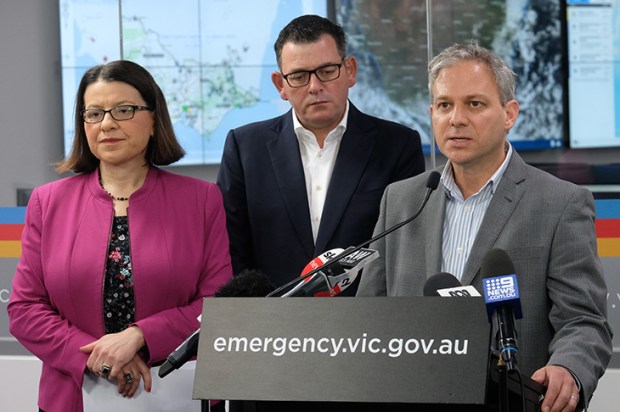Australia’s economic stagnation has become so widespread and persistent that it must be asked whether it is simply the product of bad luck or poor decisions, or is it the result of something more deliberate. Could the collapse in Australia’s productivity be the result of a calculated effort by parts of the political and bureaucratic elite, an elaborate exercise in quiet economic dismantling, carried out in plain sight?
At the April 2025 RBA Monetary Policy Board meeting, Governor Michele Bullock offered a reminder that should be obvious to anyone familiar with basic economics: ‘Productivity is how people get real wage rises.’ In today’s Australia, however, productivity growth has not just slowed but has gone into reverse. And despite growing public awareness, our political leadership continues to double down on the very policies that have driven this decline.
The trend is no longer subtle. Over the past decade, productivity has been steadily falling. Many of the decisions contributing to this decline seem too consistent to dismiss as oversight. From housing to energy, regulation to taxation, there is a sense of coordination; if not in strategy, then certainly in consequence.
Real per capita income has fallen in the last seven quarters. And in the three years to December 2024, Australia recorded an eight-per-cent drop in per capita household disposable income, the highest among all developed nations. That’s not a minor blip but a signal of deeper structural dysfunction and declining national prosperity.
Policy failures of this scale are usually buried under layers of bureaucratic language and jargon. Occasionally, however, the logic surfaces. Take for example, the decision to block a billion-dollar gold mine on environmental grounds, specifically concern over the habitat of a mythical blue-banded bumblebee. Indigenous groups soon challenged whether the bee in question even existed, yet the broader implication was clear. Extracting value from Australia’s natural resources is becoming ideologically, if not officially, discouraged.
Much of this is driven by what might be called the ‘Canberra class’, a blend of politicians, bureaucrats, consultants and ‘experts’ who cannot but understand that an expanding welfare and regulatory state carries immense costs. But as long as those costs are distributed across taxpayers and future generations, the immediate incentive to reform remains low.
Younger Australians, most affected by declining productivity and rising living costs, are often ill-equipped to push back. Years of educational decline have left many without the tools to understand the long-term consequences of policy choices made. This has led, paradoxically, to a growing youth vote in favour of precisely the kind of government expansion that has limited their own opportunities.
This is the unfortunate legacy of recent Australian governments, both Labor and Coalition: a trillion dollars in debt, record levels of taxation, a bloated and increasingly inefficient public sector and policy experiments like taxing unrealised capital gains and the NDIS.
Immigration policy has similarly been executed with peculiar priorities. Australia has welcomed two million migrants in recent years yet has made little effort to ensure that needed tradies, builders, electricians or plumbers are among them. This occurs alongside a 25-per-cent slump in housing productivity (Productivity Commission) and an ambitious plan to build ‘millions of homes’. Without the necessary workforce, those homes won’t be built. This just highlights the mismatch between central planning and practical implementation.
Meanwhile, public sector and quasi-public sector care employment continues to expand, often without clear productivity outcomes. The result is a government machine that grows in size and complexity while contributing little to economic growth. A thriving economy depends on dynamic private enterprise, but increasingly, it’s the public sector that dominates Australia’s labour market and sets the tone.
The Covid response revealed just how far the appetite for control has grown. Victoria’s use of rubber bullets against protestors became a symbol of the state’s heavy-handedness. In the post-pandemic era, that approach has shifted from force to form, namely, compliance and regulation. Today, even small businesses find themselves tangled in red and green tape, which discourage investment, ambition and innovation.
Genuine productivity growth stems from innovation, workplace flexibility, and capital investment. All three have been constrained by a growing web of industrial relations restrictions, mounting regulation and a tax system that increasingly penalises aspiration. Unsurprisingly, business investment has fallen to historic lows, as risk becomes harder to justify and reward more elusive.
The proposal to tax unrealised gains adds to this environment of uncertainty. Taxing profits that may never materialise is a policy that may play well with those wishing to ‘soak the rich’ but tends to unravel quickly in practice. It sends the wrong message to entrepreneurs, investors and job creators who are already struggling with an unpredictable policy landscape and rapidly shifting regulatory goals.
Nowhere is the policy dysfunction more evident than in energy. Australia possesses some of the richest reserves of coal, gas and uranium in the world. And yet, successive governments have insisted on keeping them largely under lock and key. Despite surging global demand for reliable, affordable energy, Australia continues to restrict domestic access to its own resources. To make matters worse, it remains the only major developed country with a legislated ban on nuclear power even while professing a commitment to reaching net zero. That contradiction is difficult to justify.
The long-defunct Jervis Bay nuclear project once offered a serious path to clean, base-load energy, but that vision was shelved. Not due to safety concerns with the reactor itself, but perhaps because reliable energy could undermine a policy direction increasingly committed to scarcity over supply and symbolism over substance.
If there is a way out of this decline, it begins with accountability. The individuals and institutions responsible for current policy settings must be held accountable. Not to assign blame, but to correct course. Reversing Australia’s productivity crisis will require meaningful reform: reducing red and green tape, encouraging competition, improving education and fostering innovation. Most of all, it requires a shift in mindset from managing decline to enabling growth and broad-based opportunity.
Until that happens, Australia risks remaining what it now resembles: a well-regulated, carefully managed nation where productivity quietly withers. Buried under high-minded intentions, bound by short-term thinking and starved of the very ambition that once defined it.
Got something to add? Join the discussion and comment below.
Dimitri Burshtein is a principal at Eminence Advisory. Peter Swan AO is professor of finance at the UNSW-Sydney Business School.
You might disagree with half of it, but you’ll enjoy reading all of it. Try your first month for free, then just $2 a week for the remainder of your first year.












